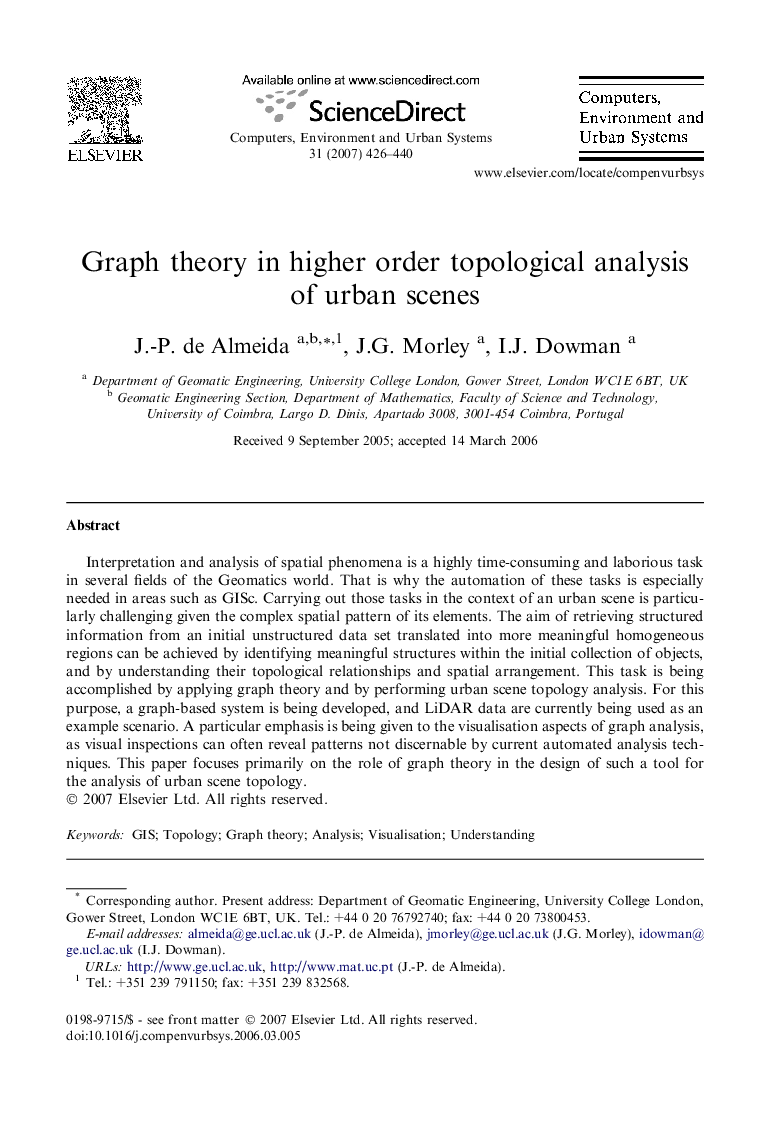| Article ID | Journal | Published Year | Pages | File Type |
|---|---|---|---|---|
| 506507 | Computers, Environment and Urban Systems | 2007 | 15 Pages |
Interpretation and analysis of spatial phenomena is a highly time-consuming and laborious task in several fields of the Geomatics world. That is why the automation of these tasks is especially needed in areas such as GISc. Carrying out those tasks in the context of an urban scene is particularly challenging given the complex spatial pattern of its elements. The aim of retrieving structured information from an initial unstructured data set translated into more meaningful homogeneous regions can be achieved by identifying meaningful structures within the initial collection of objects, and by understanding their topological relationships and spatial arrangement. This task is being accomplished by applying graph theory and by performing urban scene topology analysis. For this purpose, a graph-based system is being developed, and LiDAR data are currently being used as an example scenario. A particular emphasis is being given to the visualisation aspects of graph analysis, as visual inspections can often reveal patterns not discernable by current automated analysis techniques. This paper focuses primarily on the role of graph theory in the design of such a tool for the analysis of urban scene topology.
